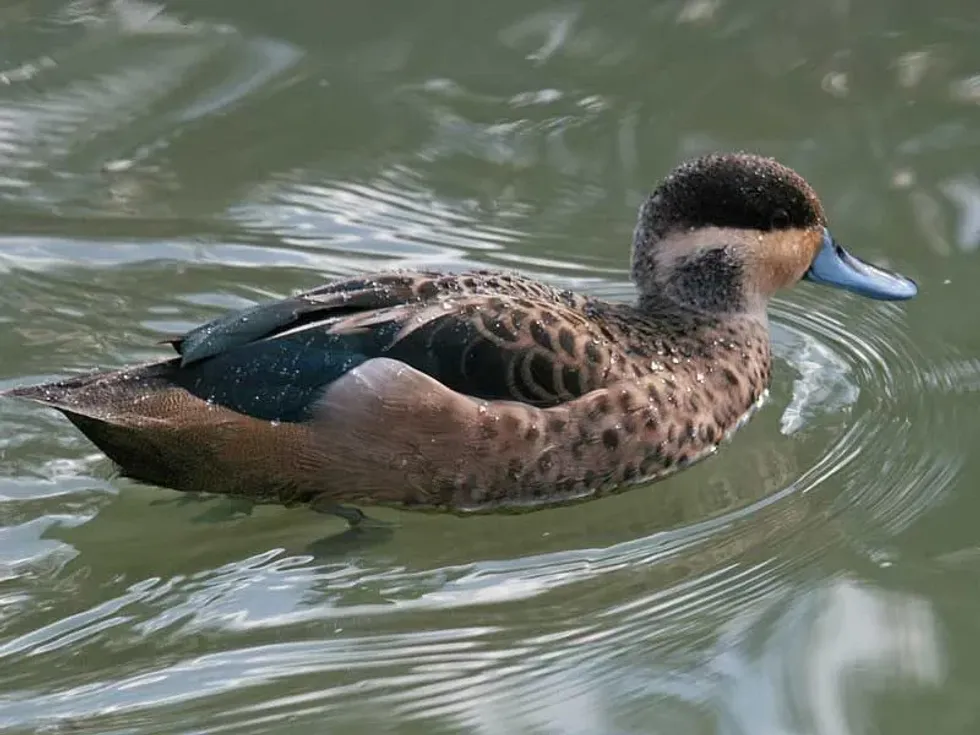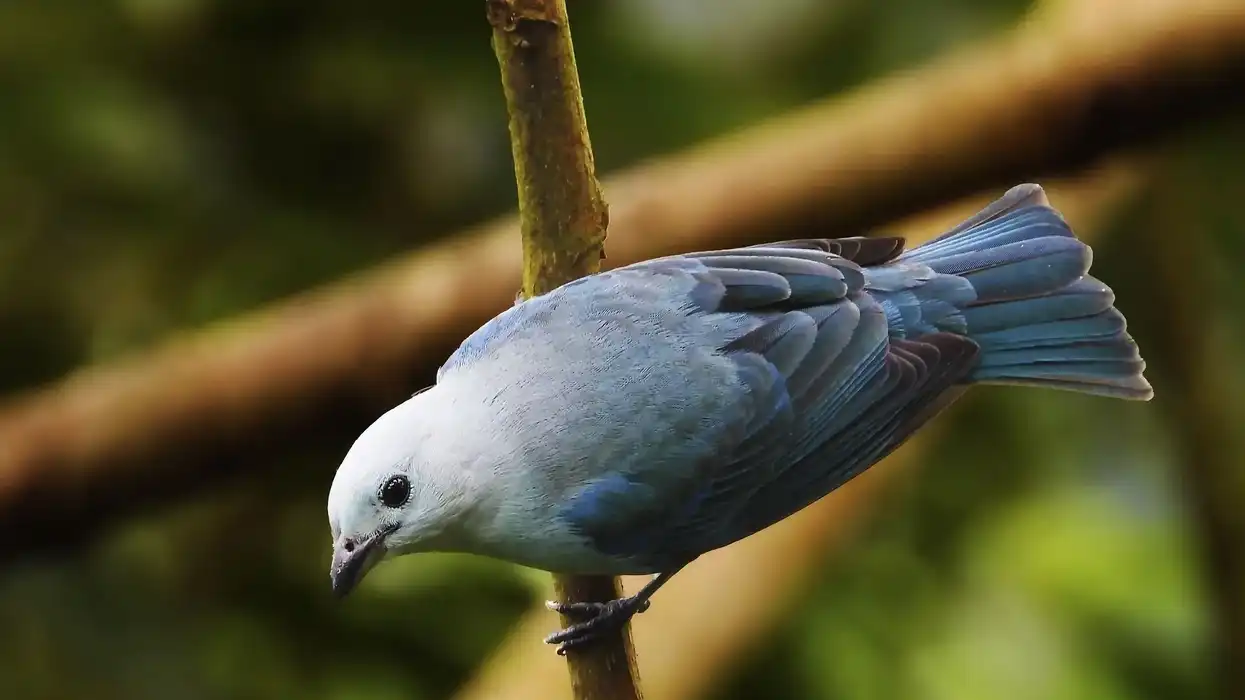The blue-billed teal is a small duck species. It goes by the scientific name Spatula hottentota, and was previously in the genus Anas. The bird has many names including the Hottentot teal, spatula hottentota, and Anas hottentota.
The bird belongs to the Anatidae family and it follows an omnivore diet. The bodies of the blue-billed teal are very small however they are good-looking ducks. The bird species has a range of colors on its wings and has a unique blue bill.
It has a very large range across Africa. In Eastern and Southern Africa, the behavior of this bird family is migratory. The behavior changes in the west, with the bird family having sedentary behavior in west Africa.
In the parts of Africa where the Anas hottentota species live, including eastern and southern Africa, the bird tends to live in groups and in pairs, however often nests in singles. Because of the Anas hottentota species' large range, the aviary birds are not considered a vulnerable species.
Habitat degradation is one of the main threats to the Spatula hottentota or blue-billed teal species.
If you like this article about the blue-billed teal and are looking for more interesting articles about birds, why not explore our fact files on the blue jay and bee-eater.
Blue-billed Teal Interesting Facts
What type of animal is a blue-billed teal?
The blue-billed teal, also known as the Spatula hottentota is a duck, a very small duck.
What class of animal does a blue-billed teal belong to?
The blue-billed teal belongs to the Aves class of animals. This class is made up of vertebrates that are warm-blooded, with birds like ducks one of the key groups of this class.
How many blue-billed teals are there in the world?
There is a very large global population of the blue-billed teal. It is estimated that the global population contains a minimum of 10,000 mature birds. The population is decreasing slowly but the Spatula hottentota still has what is considered a large population.
Where does a blue-billed teal live?
They are commonly found in Africa and in particular in the easter tropical parts of Artica. Their range includes countries such as Nigeria, Niger, Namibia, Sudan, Ethiopia, and Madagascar.
What is a blue-billed teal's habitat?
The blue-billed teal is a resident of wetlands such as marshes, lakes, and swamps. It even lives in pools and will be found among shallow, freshwater areas where there is waterside vegetation.
Who do blue-billed teals live with?
The blue-billed teal tends to live in groups of small numbers or in pairs. The Spatula hottentota often nest in singles, by themselves, however, sometimes two of these ducks will nest in pairs. The Anas hottentota are friendly and can get along with other bird species well as long as the other species are not aggressive.
How long does a blue-billed teal live?
The lifespan of a blue-billed teal ranges from 20-30 years on average.
How do they reproduce?
Most of the blue-billed teals' reproduction happens in the summer period. This doesn't mean they don't reproduce in winter though, in fact, the blue-billed teal breed year-round and this is dependant on rainfall.
The ducks reach sexual maturity between one and two years. Current research shows that the bond between the mother and father birds lasts for the duration of the female bird's incubation period.
This bond must be recreated each year.
Some of the behavior that comes before two of these species of the Spatula hottentota couple include head pumping done by both birds simultaneously, burping, drinking water, and wing flapping. The size of the cluster is between five and eight and most frequently seven eggs.
The period of incubation can be 21-27 days when they are naturally incubated. The male is protective during this time and stays nearby however once the period is over, they tend not to be involved or participate in the duck rearing.
What is their conservation status?
The blue-billed teal's conservation status is Least Concern. This is the best place to be on the conversation status scale. The Spatula hottentota species is covered under and protected by the Agreement on the Conservation of African-Eurasian Migratory Waterbirds (AEWA).
The global population range of these blackish-brown birds is large and people taking action to avoid destroying their wetland habitats will help to avoid the event of their conservation status changing. The fact that the blue-billed teal breeds year-round is supportive of their significant population.
Blue-billed Teal Fun Facts
What do blue-billed teals look like?
These ducks are considered small species of ducks and birds of the world. The Spatula hottentota are very good-looking. Their head is black and their body is a blackish-brown color.
They have a brownish-yellow throat and cheeks. The blue-billed teal has a black-spotted brown breast. Their wing speculum is a beautiful green and teal. The best part about their appearance is their blue bill.
The animal's bill is topped with a jet black streak. These birds have gray feet and legs. The female birds are lighter than the males on their underside and their sides are marked with color spots, known as mottled.
How cute are they?
The blue-billed teal is very cute. It has a nice range of colors on its feathers and a cute blue bill, so we think the Anas hottentota birds fit into the pretty cute category of birds of the world.
How do they communicate?
Both male and female blue-billed teal birds make clicking notes to communicate. This is often when the Anas hottentota is flying or if the blue-billed teal has been disturbed. The male Anas hottentota makes a sound that resembles a mechanical rattle, and females make a common quacking noise.
How big is a blue-billed teal?
The blue-billed teal is six times longer than the bee hummingbird, one of the smallest birds of the world.
How fast can a blue-billed teal fly?
The blue-billed teal grows quickly and can fly from as early as five weeks old. It is not known how fast they can fly.
How much does a blue-billed teal weigh?
The mature bird weighs between 0.1-0.6 lb (45.4-272.2 g). The eggs of the blue-billed teal weigh on average o.o5 lb (22.7).
What are the male and female names of the species?
The male and female names of this species are the same, Anas hottentota.
What would you call a baby blue-billed teal?
There is no specific name for a baby blue-billed teal. Ducklings would be sufficient.
What do they eat?
The blue-billed teals are omnivores. Although they aren't herbivores, their diet is primarily made up of vegetable matter including fruits and seeds. Seeds can get boring so their diet also features a number of water insects and other aquatic invertebrates including mollusks like snails and crustaceans.
Are they poisonous?
They are not poisonous.
Would they make a good pet?
The Anas hottentota are birds that are protected so wouldn't make a good pet.
But if you wanted to support the habitat in the wild, if you had a big lake or a body of water that features water vegetation and some of the blue-billed teal's favorite foods, you might have found yourself a friendly neighbor in this pretty duck species.
You'll probably need to find this body of water somewhere in one of the species' natural habitats around the world such as in Nigeria, Niger, Namibia, Sudan, Ethiopia, or Madagascar.
Did you know...
These teals eat their food as they swim by putting their beaks in the water.
The blue-billed teal is one of the smallest waterfowl.
Do blue-billed teals migrate?
The behavior of the Anas hottentota (Hottentot teal) living in Eastern and Southern Africa is migratory, but the behavior of the blue-billed teal living in Madagascar and West Africa is sedentary.
Why is a blue-billed teal also called a Hottentot teal?
There are no surprises in the reason why the blue-billed teal is named as such. These birds have a beautiful blue bill that has a jet-black line down the middle on the top.
Their blue bill is a standout piece on their bodies and the reason they are called by this name.
The word Hottentot is a term that was used to refer to a Khoikhoi person. It is, in fact, considered offensive to Khoisan people, so there is some movement around the world to change the name of these birds scientifically and the name blue-billed teal is preferred.
Here at Kidadl, we have carefully created lots of interesting family-friendly animal facts for everyone to discover! Learn more about some other birds from our ovenbird facts and hyacinth macaw facts pages.
You can even occupy yourself at home by coloring in one of our free printable teal coloring pages.









